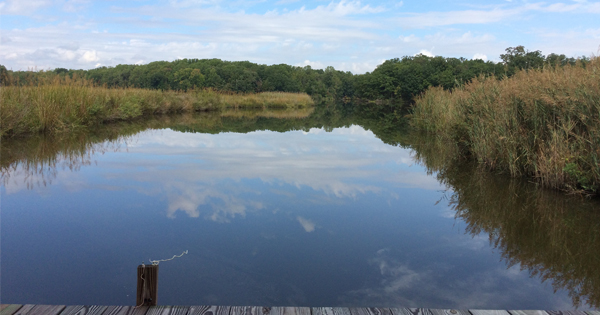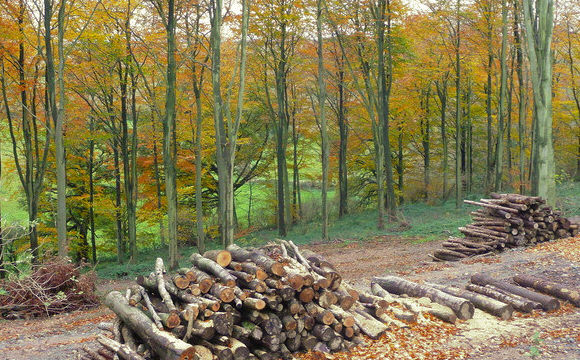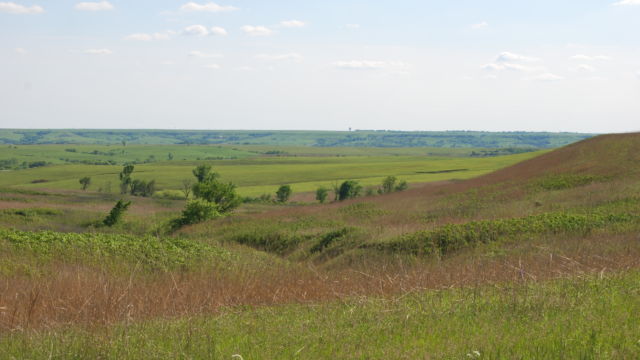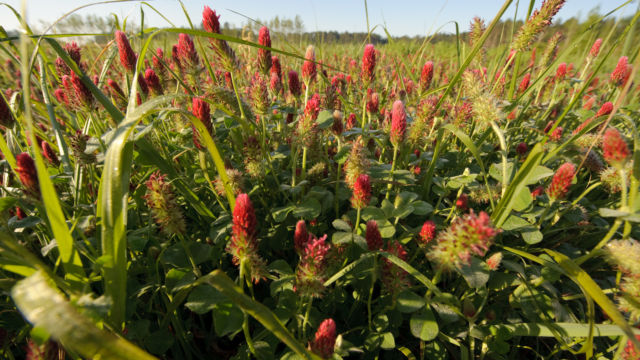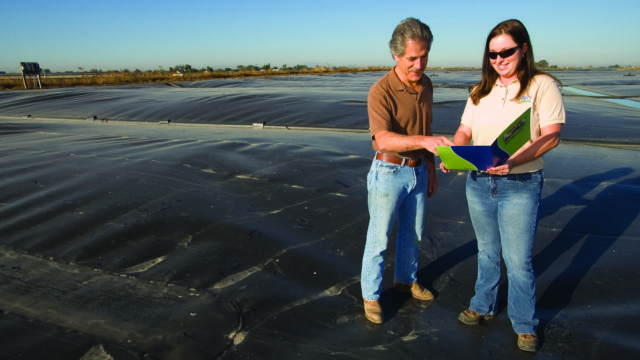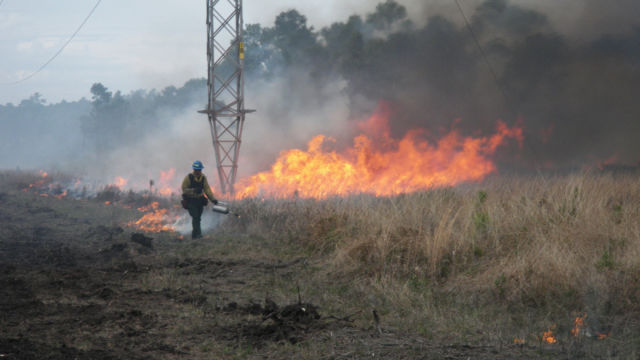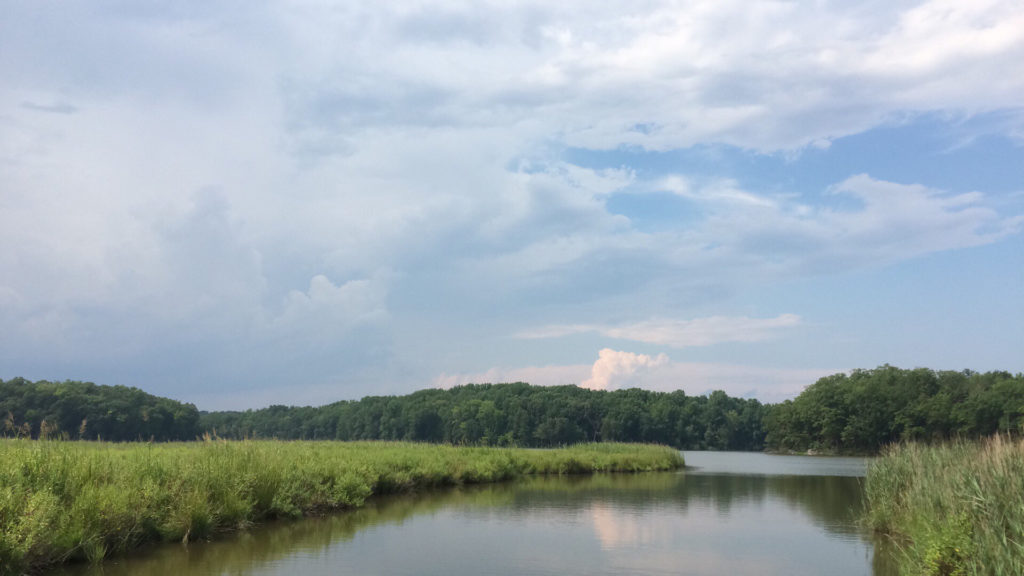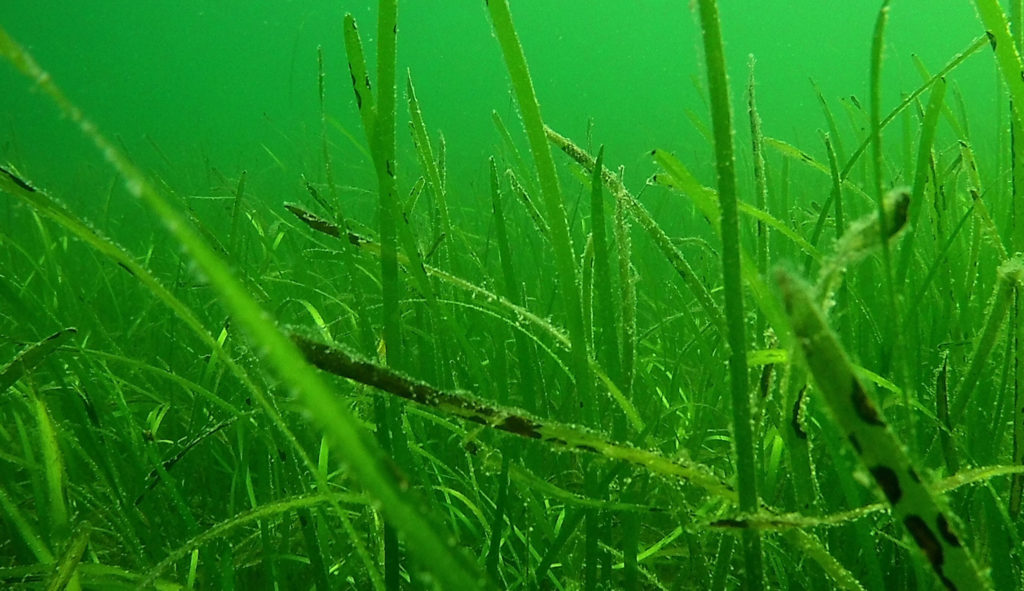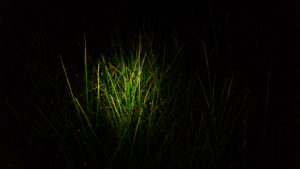Marshes Grow Shorter, Denser Stems Under High Carbon Dioxide, Which Can Help Them Resist Sea Level Rise
by Kristen Minogue
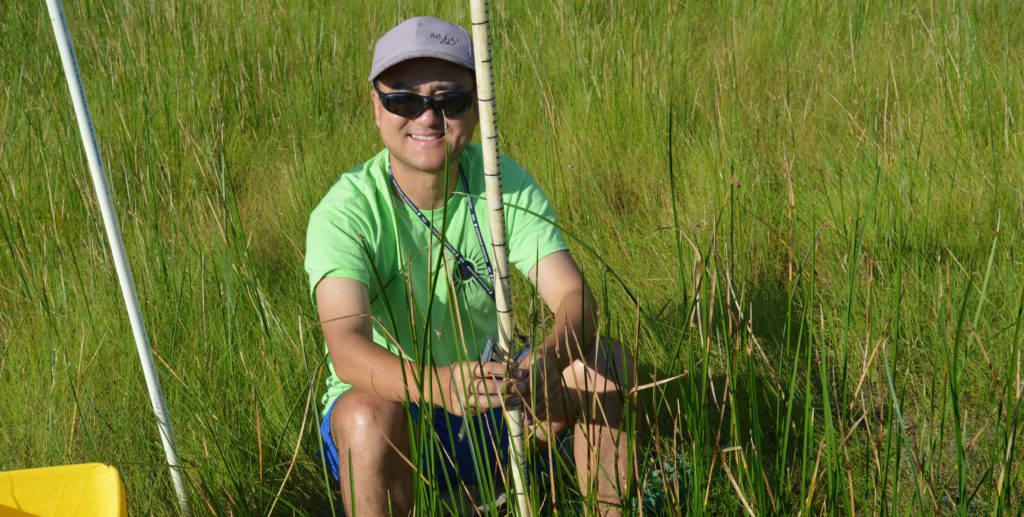
Ecologist Meng Lu measures green blades of sedge in SERC’s Global Change Research Wetland in Maryland. Lu led a discovery that under higher carbon dioxide, sedges like these grow shorter and thinner stems. (Credit: Maria Sharova/SERC)
For most plants, carbon dioxide acts like a steroid: The more they can take in, the bigger they get. But in a new study published Sept. 25, scientists with the Smithsonian discovered something strange happening in marshes. Under higher levels of carbon dioxide, instead of producing bigger stems, marsh plants produced more stems that were noticeably smaller.
“I don’t think anybody expected this,” said Meng Lu, lead author of the new study in the journal Nature Climate Change. For years, scientists had known that carbon dioxide was bulking up the total biomass of marsh plants, so it seemed natural to think individual plants were getting bigger too. “Everyone thought, okay, [plants] increased, biomass increased, so the height, width, all should increase. But that’s not the case in a marsh,” he said.




